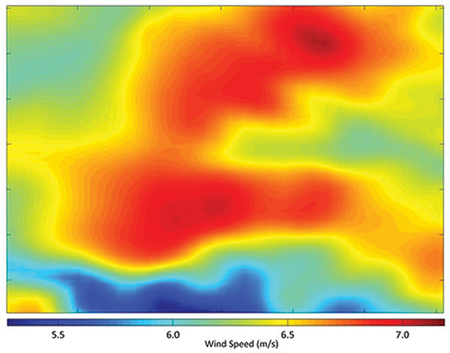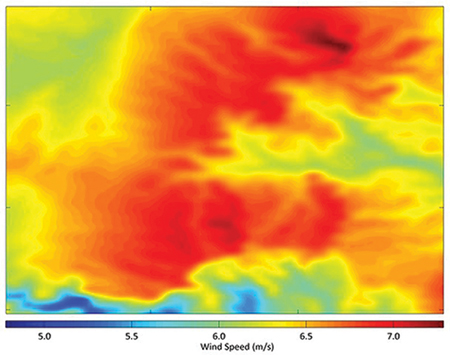 |
 |
Because wind turbines operate in the natural atmosphere, high-resolution weather modelling is a powerful tool to help wind energy projects succeed throughout the project life cycle. When properly applied, such modelling helps to optimise wind farms by reducing the uncertainty associated with the spatial variability of wind flow across the site. Studies have shown that the uncertainty of mesoscale modelling for wind energy, when run at microscales, is lower than that of other modelling techniques such as linear flow models and computational fluid dynamics. Key features in the underlying physics and application technique of mesoscale models compared with the other modelling methods result in higher accuracy for wind energy assessment. Those differences are described herein. Additionally, we present validation statistics for a large dataset of wind projects to explore relationships between model error and other model and site parameters.
By Gregory S. Poulos and Mark Stoelinga, ArcVera Renewables, USA








